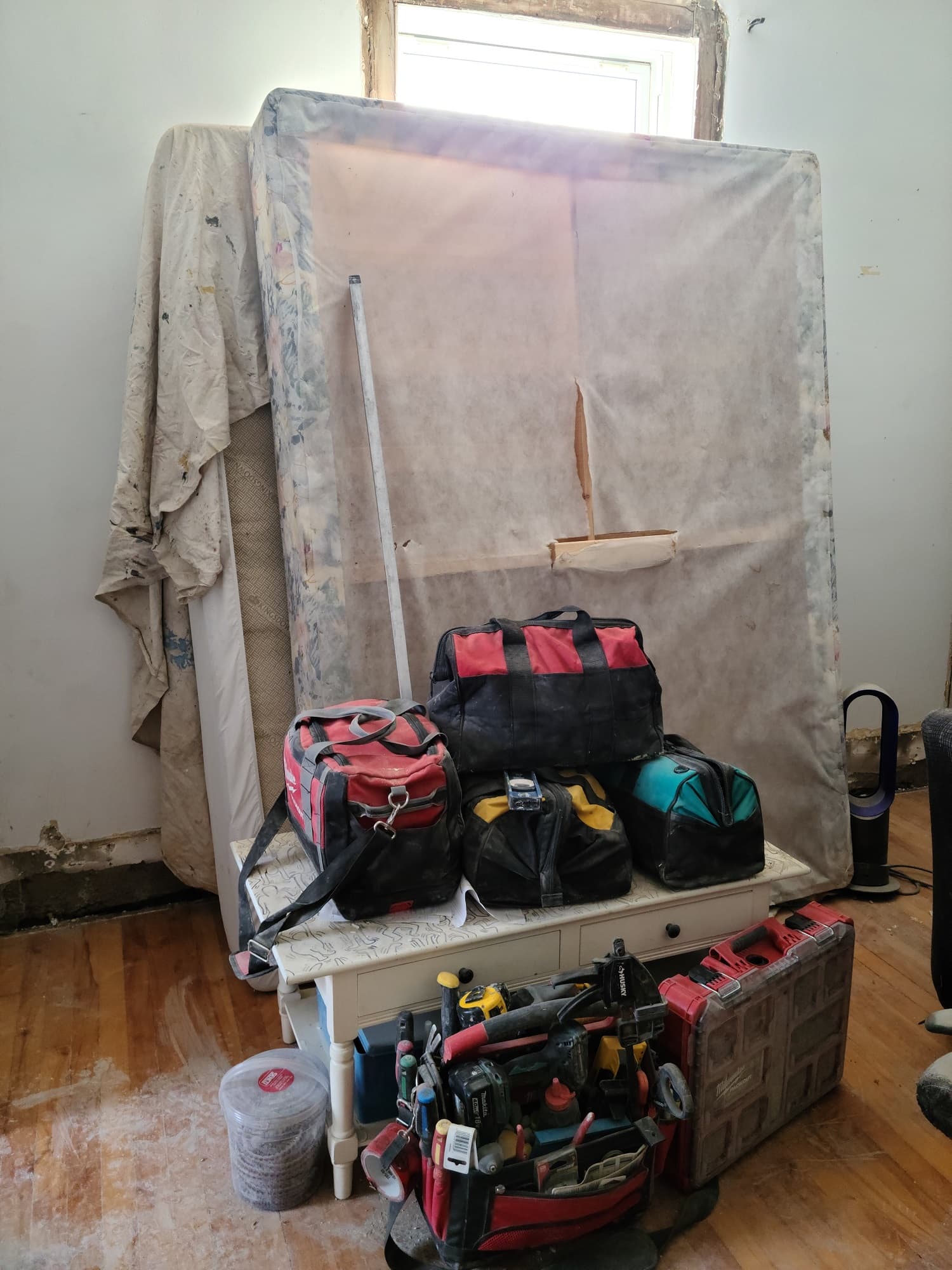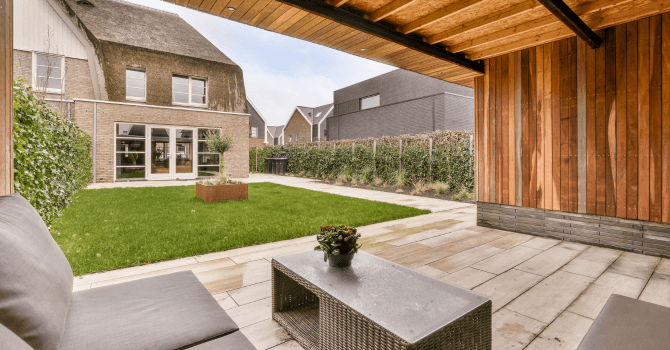The Advantages of Concrete Framed Structures
By Editorial Team
Updated on August 2, 2024

Concrete framed structures are far from a new concept. Their widespread use on building sites worldwide over the last 150 years is a testament to their incredible durability and strength.
If you’re looking to build a house around this type of structural frame that, still to this day, upholds some of the most striking historic buildings, here’s everything you need to know before making the jump.
The Pros and Cons of Concrete Frame Constructions

Source: Canva
Concrete framing made its way onto the scene in Europe at the tail-end of the 19th century and gained momentum as a result of the lumber shortage and the destructive aftermath of the First World War.
The use of concrete framing in Europe for crumbling historic buildings would eventually serve as inspiration when building the roofs of select religious buildings during the interwar period in Quebec.
Naturally, concrete frames inherited the same advantages and disadvantages as concrete.
What Are the Top 6 Advantages of Concrete Designs?
Cover extensive lengths (131-ft span [40 m], 78-ft purlin [24 m])
Fire resistant
Sustainable
Crack resistant
Eco-friendly
Impervious to humidity
1. Spans great lengths
Concrete beams can span great lengths. By that, we mean a beam spanning 131 feet (40 m), with purlins measuring 78 feet (24 m). Such significant measurements are subjected to a code, which regulates the methods used to calculate concrete-steel mixes. Said measurements will determine the beam’s second moment of area, also known as the area moment of inertia, therefore, its structural strength.
Hence, long-spanning beams can be used during the course of a structural concrete framing project.
2. Fire resistant
Concrete is fire-resistant. While said factor is a significant advantage for concrete framing, it also is a downside. Why? Because concrete exposed to very high temperatures may spall and splinter apart.
Admittedly, such extreme occurrences mainly occur in tunnel fires where temperatures reach 2,373°F (1,300°C). However, a house or apartment building fire can only reach 1,580°F (860°C).
Therefore, in the event of a fire, the concrete framing’s ability to resist the flames will depend on the amount of time it’s exposed to extreme heat.
Once the concrete frame reaches its breaking point, it can quickly collapse.
3. Sustainable
Concrete structures stand the test of time. When it comes to buildings like houses, concrete components are designed to last at least 50 years. To determine as such, architects and general contractors consider the following:
Rebar corrosion
Effects of freeze-thaw cycling
Potential alkali-silica reaction (ASR) and internal sulfate attack (ISA)
Also, note that once installed, concrete frames don’t mandate any sort of upkeep.
4. Crack resistant
The sheer strength of concrete depends on the quality of the steel-concrete bond. The latter will determine the concrete’s capacity to withstand the stresses a structure is designed to bear:
Compression force
Traction
Tensile strength
Shear stress
Friction (in case of earthquakes)
This is where the characteristics of steel reinforcements come into play, most notably their shape and size (smooth, deformed, twisted, etc.). A concrete frame is extremely solid when erected properly.
But, should friction occur as a result of seismic activity, their bonding and anti-corrosion coating should limit cracking from seismic shock.
5. Eco-friendly
Builder experts are the first to state that concrete isn’t eco-friendly given that the production of cement is responsible for 7% of global greenhouse gas emissions. In the industrial sector alone, said number spikes to 26%.
However, if one were to consider its entire life cycle, one can perceive concrete’s green side differently. Indeed, 80% of the concrete used for construction purposes is already recycled or reclaimed.
In addition, the Canadian government is committed to achieving carbon neutrality across the cement industry by 2050. As such, concrete, which is the second most used resource on Earth after water, remains a highly promising material.
6. Impervious to humidity
Concrete isn’t moisture-proof; the structural design of your roof is what makes concrete impervious to humidity. How is that? By not shielding your concrete frame with water-resistant roofing, that’s how.
Roofing tiles and other insulation materials you may choose to add to your concrete frame structure won’t enclose it in an entirely sealed environment. And that’s exactly what concrete needs.
By allowing concrete to breathe, you won’t ever experience moisture-related problems.
What Is the Disadvantage of a Concrete Frame?

Source: Canva
Water infiltration resulting from building fault
Weight of concrete
Planning for openings
Doesn’t suit sloped roofs
1. Risks of water infiltration
While it’s easier to erect compared to timber framing, structural concrete framing is, nonetheless, quite complex to install. Its waterproofing is solely guaranteed on account of its proper installation.
Otherwise, your house risks experiencing water ingress rather quickly. As such, we highly recommend hiring experienced concrete carpenters to carry out this type of structural work.
2. Weight of concrete
Reinforced concrete weighs roughly 2,200 kg/m³. For comparison’s sake, it’s 2.5 times the weight of oak, which weighs 900 kg/m³. However, on a per square metre basis, reinforced concrete isn’t that much heavier than a timber frame.
Still, it's important to consider the total weight of concrete framing and tailor the house's walls to the potential structural stresses to bear.
3. Planning for openings
The biggest downside to concrete framing is its prefabrication (precast). Consequently, you have to plan for all openings, from ventilation to windows and doors, with cable wiring in between, way ahead of time.
If you overlook this aspect, plan for major work in the near future to render your home fully functional through structural changes.
4. Doesn’t suit sloped roofs
If you dream of having a house with 45-degree slopes, concrete framing isn’t for you. Concrete best suits flat roofs and roofs with the slightest pitch.
What Are Four Types of Materials that Are Made Using Cement?

Source: Canva
Ordinary/Normal Strength Concrete
Standard-strength concrete is commonly used in foundations, residential and commercial buildings, and infrastructure projects. Its balance of durability, cost-effectiveness, and ease of use makes it ideal for building floor slabs, columns, beams, roads, and pavements. This type of concrete provides sufficient strength for everyday structural loads and environmental conditions, ensuring long-lasting performance in various applications.
Reinforced Concrete
Naturally, non-reinforced concrete can withstand compressive forces. However, when it comes to traction, it cracks. To offset the latter, steel reinforcements are integrated into the concrete.
As previously mentioned, the strength of reinforced concrete lies in the steel-concrete bond. When adhesion is guaranteed, the coating is perfected, and the selected rebar suits project-specific stresses, this type of concrete is faultless.
If you want to learn more about the rebar used to make reinforced concrete, note the following different rebar types:
Smooth
Deformed
Longitudinal
Transverse
Lightweight Concrete
The aggregate used to make lightweight concrete can be produced from a slew of materials:
Polystyrene
Lightweight aggregate
Expanded shale aggregate
Clay
Slate
Industrial by-products
Waste
And more
Being lightweight is its primary asset. It limits structural weight so you don't have to rethink an entire house or building because it limits structural weight.
Additionally, lightweight concrete often exhibits decreasing endogenous shrinkage. Also referred to as self-desiccation, an internal tensile phenomenon specific to concrete that surfaces over time.
As a result of shrinkage, air voids are created in the concrete, enhancing its porosity, and thus further risking moisture ingress into the structure.
In some cases, lightweight concrete is more resilient to freeze-thaw cycling.
Lastly, lightweight concrete is especially adaptable. Based on the aggregates used, the concrete’s physical properties evolve, further adapting to the intended project.
Prestressed Concrete
Prestressed concrete shares the same objective as reinforced concrete: withstanding tensile stress and strain. Prestressed concrete achieves the latter thanks to axial compression. Said compression aims to cancel out or limit tensile stresses.
The concrete is prestressed either during the pretensioning stage, by way of stretched rebar, or during the post-tensioning stage, using stretched rebar once the concrete has cured.
Prestressed concrete has numerous upsides, such as:
Low risk of corrosion
Efficient use of materials
Suitable for large-scale projects (bridges, nuclear containment buildings, historic buildings, dams, etc.)
Building a Rigid, Concrete Frame: Precast Details

Source: Canva
Building a concrete frame begins with a prefabricated (precast) structure. The latter is delivered in a kit-like format that includes the following components:
Beams
Columns
Posts
Tee beams
The first part of the job consists of installing the concrete posts on the house’s foundation. These posts, measuring between 6–49 feet (2–15 m), can be positioned in:
Dedicated tubes
Drilled holes
Depressions, meaning on cast or prefabricated footings
I-beams and inverted beams are then secured onto the posts using form ties and later sealed with mortar. Lastly, the purlins are assembled to the structure.
For more information, check out these articles:
Get 3 quotes for your structural concrete framing project
RenoQuotes.com can help you get quotes from a general contractor. By submitting your project, we’ll connect you to top-rated contractors. Fill in the form on the homepage (it only takes a few minutes) and get estimates from trusted professionals.
Dial 1-844 828-1588 to speak with one of our customer service representatives.
Looking for something else?
Related articles
The latest industry news, interviews, technologies, and resources.

Amanda Harvey
•07 Nov 2023
Is your home ready for a much-needed renovation? Do you feel like you're prepared to take on the job? Many homeowners feel as though everything has already been considered and arranged, but there are often aspects of home renovations that are overlooked and can lead to serious problems down the line.

Editorial Team
•14 Nov 2023
Have you finally decided to start a full or partial home renovation to boost your comfort and living space or simply revamp your outdated home?

Christine Simard
•07 Nov 2023
A veritable Alibaba cave for all the foodies and apprentice cooks of this world, the pantry should be as practical as it is aesthetic. Between simplicity and modernity, its layout deserves thought and organization to make your kitchen experience as pleasant as possible.

Editorial Team
•21 Mar 2024
When it comes to relaxing in your backyard, prying eyes from neighbouring lawns can quickly become uncomfortable. Luckily, nowadays, there are numerous solutions like outdoor privacy screens for decks and terraces. Not only will these shield you from curious stares, but they’re also a nice, decorative feature. Discover below the best solutions available to fully benefit from your deck, meaning, in complete privacy.

Editorial Team
•25 Jul 2025
If you have a concrete floor that needs a new finish or you’re wanting to change the look of your floors and looking for an alternative to hardwood or ceramic, floor resurfacing could be of interest to you.